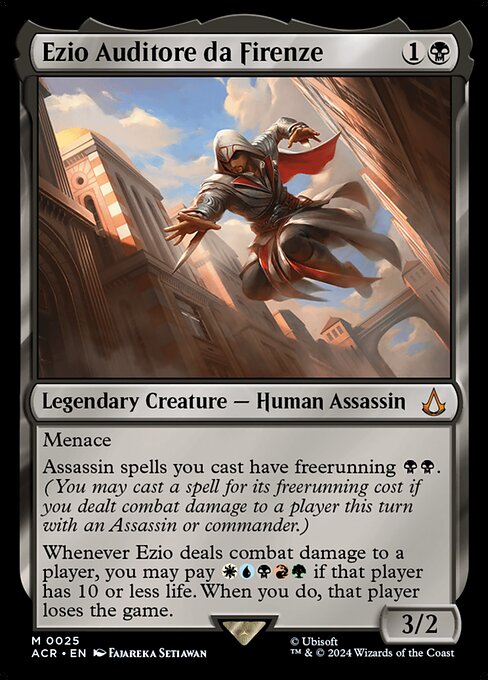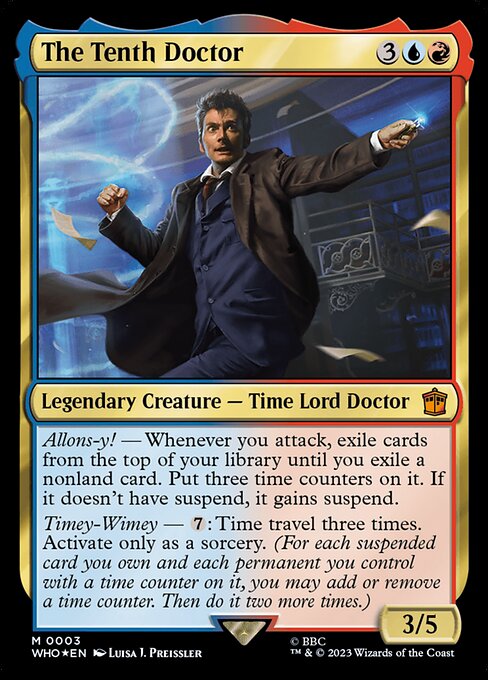Deck & Commander Strategies
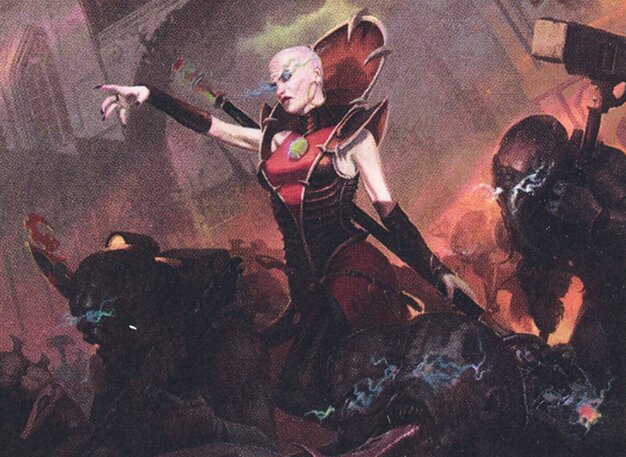
Magus Lucea Kane
Focuses on building a board presence with creatures that accumulate counters and casting large X spells to be copied for massive impact, aiming to overwhelm opponents with powerful spells and synergistic creatures.

Ezio Auditore da Firenze
An Assassin tribal deck centered on cheating out assassins cheaply and dealing combat damage to trigger card draw and potential game-ending effects when opponents fall below a certain life total.


Rose Tyler and The Tenth Doctor
Utilizes suspend cards and time counters to control the board and generate value over time, with companions like Amy Pond and Rory Williams providing additional combat utility and synergy with suspended cards.
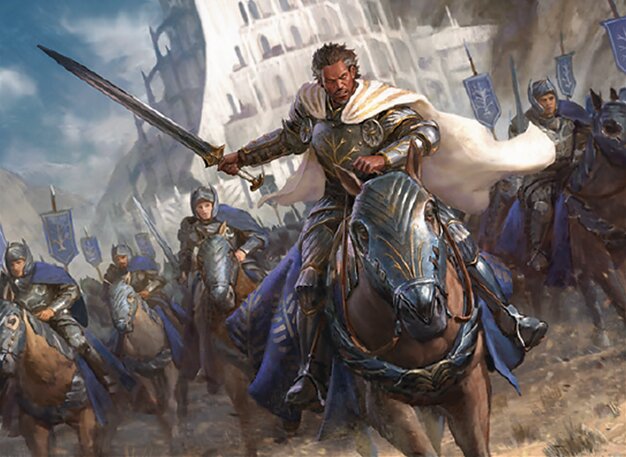
Aragorn, the Uniter
A five-color deck that casts a variety of multicolored spells to generate tokens, deal direct damage, and gain incremental value through scrying and creature buffs, aiming for a flexible and value-driven victory.
Gameplay Insights
- 1
Casting Grasp of Fate to exile multiple key creatures at once was a pivotal play that temporarily disrupted the board state and slowed down aggressive strategies.
- 2
Using Etso Auditore da Firenze's ability to cast Assassin spells for reduced mana cost allowed for early pressure and card advantage through combat damage triggers.
- 3
Aragorn's ability to produce tokens and deal damage when casting spells of different colors provided consistent value and board presence throughout the game.
- 4
The synergy between the 10th Doctor deck's suspend mechanics and companions like Amy Pond and Rory Williams added a unique layer of resource management and timing to the gameplay.
Notable Cards
-
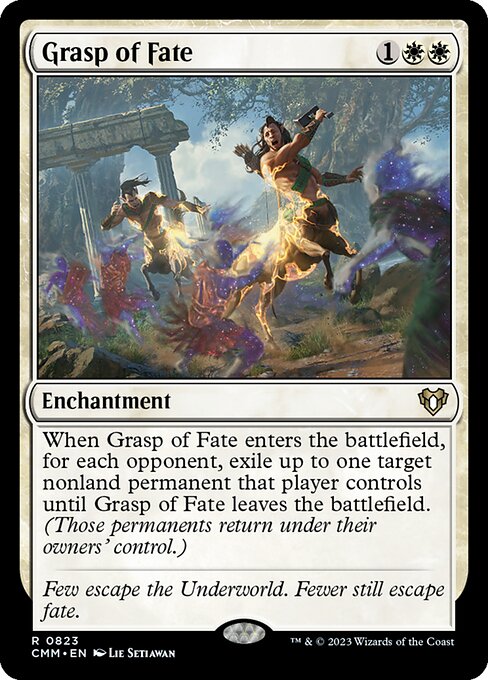
Grasp of Fate
-

Magus Lucea Kane
-

Aragorn, the Uniter
-

Amy Pond
-
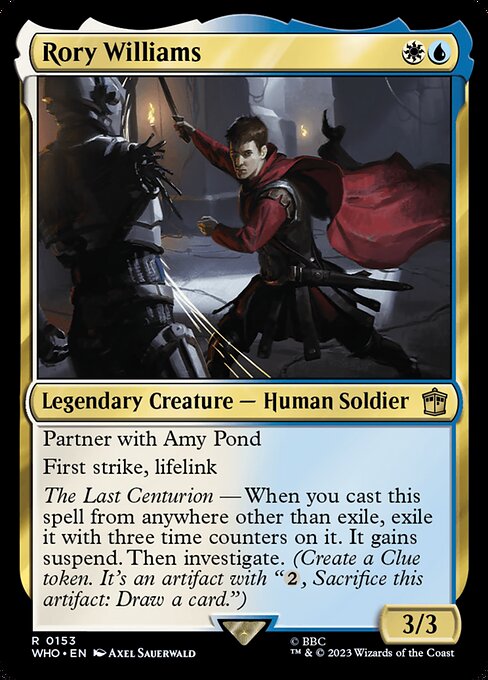
Rory Williams
-

Rose Tyler
Gameplay Summary
The game began with players ramping mana and establishing their board presence, with key early plays including the casting of Etso Auditore da Firenze and the deployment of various lands to enable multicolored spells.
Malhound quickly set up a threatening board by cheating out powerful Assassin creatures at a reduced cost and generating card advantage through combat damage triggers.
Quincy, piloting Aragorn the Uniter, focused on casting diverse multicolored spells to create tokens, scry, and deal damage, aiming to leverage Aragorn's flexible abilities for value and board control.
Meanwhile, Magus Lucea Kane's player aimed to build a board full of counters and copy X spells for overwhelming effects, while the 10th Doctor and Rose Tyler player utilized suspend cards and time counters to create unique synergies and board control options. A major turning point occurred when Grasp of Fate was cast, exiling several key creatures including Magus Lucea Kane, Aragorn, and Etso Blade of Vengeance, temporarily removing some of the most potent threats from the game.
This forced players to adjust their strategies and look for answers to regain momentum.
Throughout the game, combat damage from creatures with menace and other evasive abilities played a crucial role in dealing damage and triggering abilities that allowed for card draw and further board development.
The win condition appeared to revolve around leveraging the unique synergies of each commander—whether through aggressive combat damage with Etso's Assassin tribal effects, multicolored spell value and token generation with Aragorn, or powerful X spell interactions with Magus Lucea Kane—to ultimately overpower opponents.


